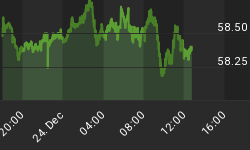There is a great deal of hot air being blown about -- particularly from that pack of economic illiterates commonly called politicians, especially Democrats. Their line is simple and to the point: China has manipulated the exchange rate so as to artificially lower the price of her manufactures at the expense of American industry. In other words, hapless Chinese taxpayers are being forced to subsidise American consumers. (Complaints about this alleged policy are particularly rich coming from Democrats: the people who made careers out of offering free lunches to the American public).
It is true that something bad is going on in the Chinese economy, but it is not subsidised exports. China is undergoing a massive inflation-led boom that can only result in severe distress. Let us look at some statistics, the sort our economic commentariat ignore. The latest monetary aggregates show that M2 increased by "16.9 per cent year on year in 2006". (M2 consists of currency and deposits).
The response of China's central bank to this figure was to declare that its monetary expansion is in line with economic policy. M1 (the narrow definition of money) grew by 20.2 per cent in the same period. For the years 2001, 2002 and 2003 M2 expanded by 34.2 per cent, 19 per cent and 18 per cent. These are massive increases compared with monetary expansion in the US. From April 2005 to last March M1* rose by only 0.07 per cent in the US. For March 2006 to March 2007 M1 fell by -1.1 per cent. As China's monetary growth accelerates US money supply has turned negative.
Chinese statistics indicate that the country is experiencing a classic boom and bust situation. For instance, industrial production leapt by 18.5 per cent last year and spending on building and other fixed assets jumped by about 23.0 per cent.. The monetary situation was aggravated by banks engaging in a lending orgy in February. No wonder China's central bank raised the commercial banks' reserves ratio from 7.5 per cent to 10 per cent. The 12-month lending rate was raised from 5.58 per cent to 6.39 per cent in company with open market operations.
Nevertheless, it is still being reported that bank credit, to the puzzlement of many, is still expanding. I see three possibilities here: First, it may be that interest rates are still too low and that they will have to be raised further. Second, there is so much credit floating around because of the past expansion that it will take a while to drain it out of the system. The third possibility reminds me of the 1920s credit expansion in the US. The Fed engaged in open market operations to slow down credit expansion to no avail. The reason being that at the same time as the Fed sold securities to the banks it kept its discount below the market rate. This enabled the banks to replenish their reserves even as the Fed's open market operations siphoned off credit.
This brings us to China's trade surplus with the US. What is being overlooked is that China also has a surplus on its capital account. The general rule is that the balance of payments always balances, at least over time. Hence a current account deficit should be offset by a capital account surplus and vice versa. So how did China manage to pull this trick off? Let me hazard a guess. It could be that she has deposited short-term funds in foreign banks while still importing long-term capital. The other possibility -- which I think is highly unlikely -- is that she is using her trade surplus to lend long-term to foreigners. This would allow her to be a net exporter of capital while increasing her short-term debt.
The important point, however, is that this is the sort of thing one would expect to flow from unstable monetary situations.
Part II will follow next week.
*I have used M2 for China because it includes savings deposits and time deposits. I use M1 for America because it comes close to AMS (the Austrian definition of the money supply) which is:
Austrian money supply definition is currency outside U.S. Treasury, Federal Reserve Banks and the vaults of depository institutions.
Demand deposits at commercial banks and foreign-related institutions other than those due to depository institutions, the U.S. government and foreign banks and official institutions, less cash items in the process of collection and Federal Reserve float.
NOW (negotiable order of withdrawal) and ATS (automatic transfer service) balances at commercial banks, U.S. branches and agencies of foreign banks, and Edge Act corporations.
NOW balances at thrifts, credit union share draft balances, and demand deposits at thrifts. AMS definition therefore equals cash plus demand deposits with commercial banks and thrift institutions plus saving deposits plus government deposits with banks and the central bank.
Irrespective of which monetary measure one uses (apart from currency) there is no gainsaying the fact that there has been a massive moneaty expansion in China.
















